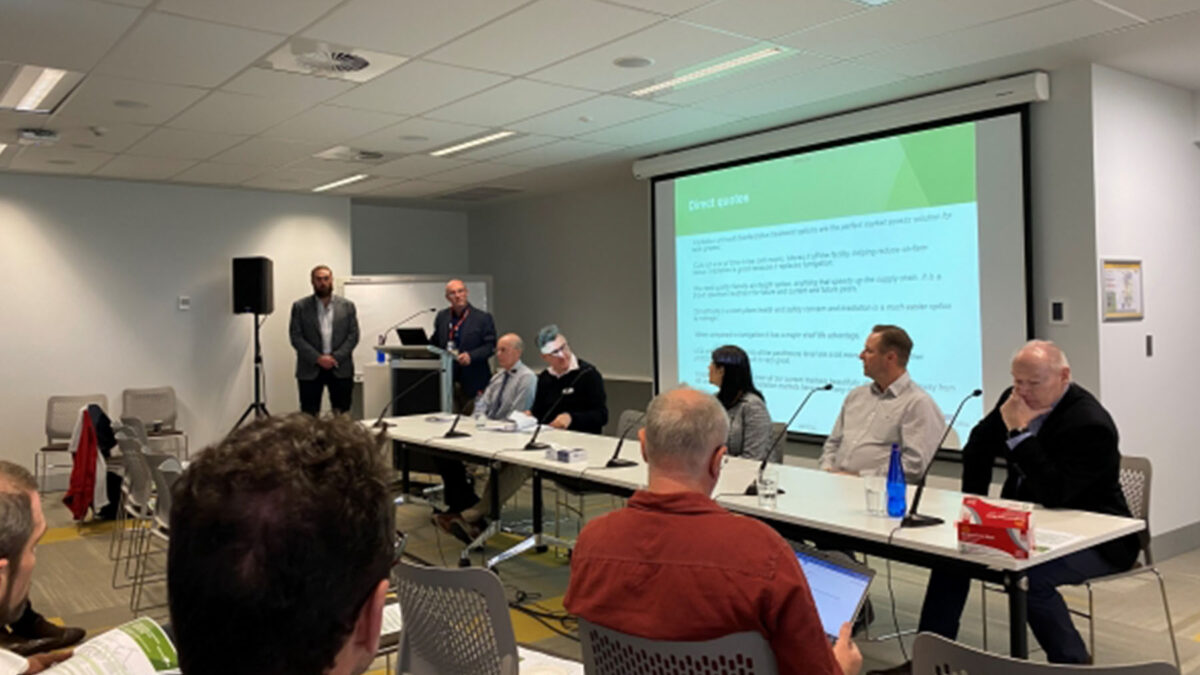Building Capacity in Phytosanitary Irradiation Strategic Workshop
Fruit Fly Engagement Coordinator Chris O’Connor recently attended the ‘Building Capacity in Phytosanitary Irradiation Strategic Workshop’ hosted by Agriculture Victoria in Melbourne.
The workshop was developed as part of the Hort Frontiers funded ‘Building capacity in irradiation – pathways to export‘ project and allowed government, industry, research and service providers to come together and discuss industry experience with irradiation, overcoming the barriers to trade and how irradiation fits with the Australian Food Standards. This was followed up by a tour of the Steritech Irradiation facility in Merrifield hosted by Steritech CEO, Murray Lynch and Fresh Produce Business Manager, Ben Reilly.
Irradiation is a phytosanitary treatment, which uses an ionizing radiation source such as x-rays to which when applied prevent juvenile emergence and induces infertility in adults, meaning that they cannot breed. The amount of irradiation applied is measured in Grays (Gy), and for tephritid fruit flies a minimum absorbed dose of 150 Gy is generally required.
Irradiation offers an alternate market access phytosanitary solution which offers some key benefits. The first of which is that the process leaves no residue and hence does not any associated have MRL issues. Additionally, the treatment process does not generate heat and so has minimal impact on cold chain management and has minimal impact to fruit quality.
Several industries, for instance table grapes and mangoes, are taking advantage of the benefits offered by irradiation. Irradiated Australian produce has been supplied into international markets such as Vietnam, New Zealand, Indonesia and the United States leveraging access facilitated through ISPM 28 PT 5 and PT7.
Irradiation treatment is also increasingly being used to access domestic markets, with two key tools facilitating this. The first is Standard 1.5.3 of the Australia New Zealand Food Standards Code (FSANZ) which was updated last year to now permit all fresh fruit and vegetables to be irradiated for the purpose of pest disinfestation for phytosanitary purposes. And secondly via the Interstate Certificate Assurance scheme under ICA 55 – Irradiation Treatment.
Irradiation is gaining widespread support as an effective and sustainable tool to support phytosanitary market access. In the past there has been a perception of public acceptance barriers due to a lack of understanding by consumers and supply chain. This tendency is slowing however as consumers and supply chain become more familiar with the technology and open to broader adoption across commodities.
For those looking for further information the presentations have been recorded and are available online.
The ‘Building capacity in irradiation – pathways to export’ project is funded by the Hort Frontiers Asian Markets Fund (Project AM19002), part of the Hort Frontiers strategic partnership initiative developed by Hort Innovation, with co-investment from the Department of Jobs, Precincts and Regions (Victoria), Steritech, NSW Department of Primary Industries, SA Research and Development Institute, NZ Plant and Food Research, Aerial (France) and the Australian Government.
